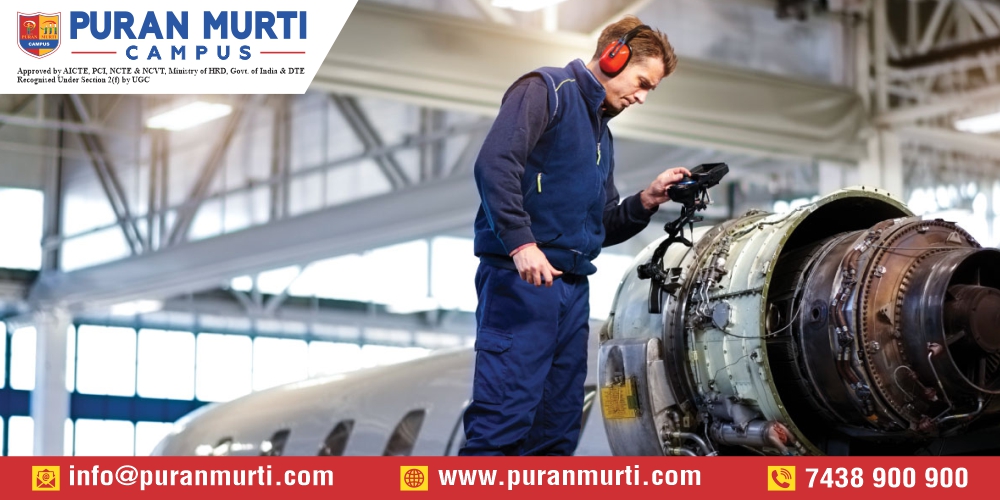The Journey to Becoming an Aeronautical Engineer
Posted on : 5 June, 2024 11:01 am
Introduction
- Aeronautical engineering is a fascinating and dynamic field that plays a critical role in the advancement of aviation and aerospace technologies. This blog aims to guide aspiring engineers on their journey to becoming successful aeronautical engineers. We’ll explore the educational pathways, key skills, hands-on learning opportunities, and career prospects that define this profession. Whether you’re a high school student planning your future or a college student considering a specialization, this comprehensive guide will provide you with the essential information and inspiration needed to navigate the path to a rewarding career in aeronautical engineering.
Understanding Aeronautical Engineering
- Aeronautical engineering focuses on the design, development, testing, and production of aircraft and related systems. It combines principles from physics, mathematics, and engineering to solve complex problems in aviation. Students learn about aerodynamics, materials science, propulsion, and avionics, preparing them to innovate in areas such as aircraft design, safety, and efficiency, driving the future of flight.
Educational Pathway
- The educational pathway to becoming an aeronautical engineer typically begins with a bachelor’s degree in aeronautical or aerospace engineering. This program covers fundamental subjects like mathematics, physics, and core engineering principles. Advanced topics include aerodynamics, propulsion, and avionics. Many students further their expertise through master’s programs or specialized certifications, gaining hands-on experience through internships and research projects.
Curriculum and Core Subjects
- The aeronautical engineering curriculum includes core subjects such as aerodynamics, propulsion, flight mechanics, and avionics. Students also study materials science, structural analysis, and fluid dynamics. Practical courses involve computer-aided design (CAD), simulations, and laboratory work. The program often includes projects and internships, providing hands-on experience with aircraft design, testing, and maintenance, ensuring a well-rounded education in aeronautics.
Hands-On Learning and Internships
- Hands-on learning in aeronautical engineering involves lab work, simulations, and design projects, where students apply theoretical knowledge to real-world scenarios. Internships at aerospace companies, airlines, or research institutions provide practical experience, allowing students to work on live projects, understand industry practices, and network with professionals. These opportunities are crucial for developing practical skills and enhancing employability in the field.
Developing Key Skills
- Developing key skills in aeronautical engineering involves mastering technical abilities such as problem-solving, analytical thinking, and proficiency in CAD software. Communication and teamwork are essential for collaborative projects. Practical skills are honed through hands-on experiences, internships, and lab work. Additionally, a strong foundation in mathematics, physics, and engineering principles is crucial for innovation and effective problem-solving in the aerospace industry.
Research and Specialization Opportunities
- Research and specialization opportunities in aeronautical engineering allow students to focus on areas such as aerodynamics, propulsion systems, avionics, and materials science. Participating in cutting-edge research projects, often in collaboration with industry leaders, enhances understanding and innovation. Specialization courses and elective modules enable students to delve deeper into specific interests, preparing them for advanced roles in academia, industry, or research institutions.
Career Paths and Opportunities
- Career paths in aeronautical engineering are diverse, spanning roles in aircraft design, aerospace research, avionics, and maintenance. Opportunities exist in commercial airlines, defense contractors, space exploration agencies, and aircraft manufacturing companies. Graduates can work as design engineers, flight test engineers, or systems engineers, with potential for advancement into project management, consultancy, or academic and research positions.
Future Prospects in Aeronautics
- Future prospects in aeronautics are promising, driven by advancements in technology and increased demand for sustainable aviation solutions. Emerging fields such as unmanned aerial systems (drones), electric and hybrid aircraft, and space tourism offer new career opportunities. Continuous innovation and global aerospace projects ensure a dynamic and evolving industry, providing aeronautical engineers with exciting and varied career paths.
Conclusion
- Pursuing a career in aeronautical engineering offers a pathway filled with innovation, challenges, and significant rewards. With a strong educational foundation, hands-on experience, and opportunities for specialization, graduates are well-equipped to contribute to advancements in aviation and aerospace. The diverse career prospects and the rapidly evolving industry ensure a dynamic and fulfilling professional journey. Whether working on cutting-edge aircraft designs, sustainable aviation solutions, or space exploration, aeronautical engineers play a crucial role in shaping the future of flight and technology.

